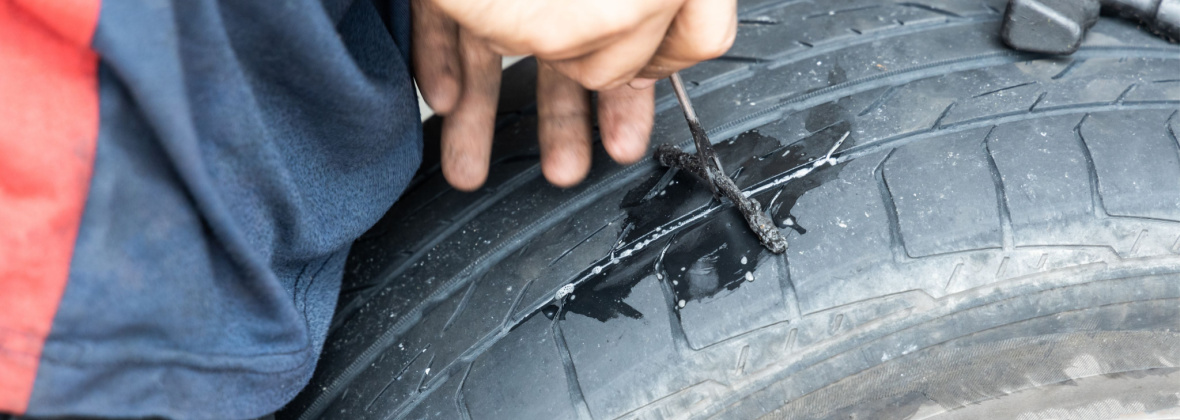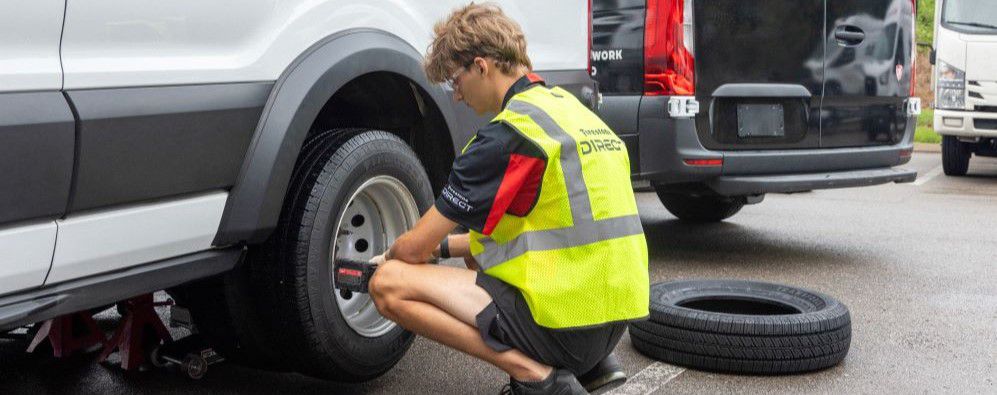Morris Tire Service: Comprehensive Tire Care
Morris Tire Service: Comprehensive Tire Care
Blog Article
Specialist Overview to Tire Repair: Everything You Need to Know
Navigating the world of tire fixing can be a daunting job for several car proprietors. From identifying the usual sources of tire damage to understanding the detailed actions involved in fixing a leak, there is a riches of knowledge to understand. In this detailed guide, we will untangle the complexities of tire repair work, dropping light on the numerous types of repair packages offered and offering important understandings into when it could be time to bid farewell to a worn-out tire. Stay tuned as we dig deeper right into the nuances of tire upkeep, furnishing you with the essential expertise to ensure your tires stand the examination of time.
Typical Causes of Tire Damage
What are the usual causes that lead to tire damages, affecting vehicle efficiency and security? Tire damages can occur due to numerous aspects, with among the main reasons being inappropriate rising cost of living pressure. Under-inflated tires can cause excessive heat buildup, leading to enhanced wear and potential blowouts. Conversely, over-inflated tires can result in reduced grip, irregular wear, and a harsher experience.

One more usual root cause of tire damage is inadequate tread depth. Worn-out treads can jeopardize hold when traveling, specifically in damp or unsafe conditions, enhancing the danger of crashes. In addition, driving over pockets, particles, or sharp things can penetrate or cause cuts in the tire, compromising its framework and possibly creating a level.
Furthermore, inappropriate wheel positioning and out of balance tires can additionally add to tire damage. Misaligned wheels can cause irregular wear patterns, while out of balance tires can cause vibrations, influencing both the lorry's handling and the tire's durability. Normal maintenance checks and timely fixings can assist minimize these usual reasons of tire damages, making sure optimal vehicle efficiency and safety and security.
Kinds Of Tire Repair Kits
To address the aftermath of usual reasons of tire damage gone over earlier, it is vital to comprehend the different kinds of tire fixing sets offered for car owners. There are largely three kinds of tire fixing kits frequently made use of: plug sets, spot sets, and mix repair kits.
Plug kits are a fast and easy remedy for repairing tiny leaks caused by nails or screws. They are composed of a T-handle tool and rubber plugs that can be put into the slit to seal the opening efficiently. Spot kits, on the various other hand, are better for bigger punctures or cuts in the tire. These sets include a spot and adhesive product that is related to the internal cellular lining of the tire to cover the damaged location securely.
Combination repair kits provide the benefit of having both plug and spot parts, providing a detailed solution for a range of tire damages scenarios. It is essential for car proprietors to familiarize themselves with these various sorts of tire repair packages to be gotten ready for any type of unexpected tire problems when driving.

Actions to Repair a Tire Leak
Fixing a tire slit requires a methodical technique and the right devices to ensure a risk-free and efficient remedy. When faced with a punctured tire, the very first step is to safely pull over to a flat, steady surface area get more far from traffic. Engage the hand brake and area wheel chocks behind the tires to avoid any unexpected rolling. Next off, get rid of the punctured tire complying with the lorry supplier's standards. As soon as the tire is removed, inspect the punctured area to locate the foreign object triggering the leak. Utilize a reaming tool to clean and roughen the puncture hole for better bond. Apply rubber cement to the area and place a plug making use of a plug insertion device. Cut any excess plug material flush with the tire tread. Reinflate the tire to the suggested pressure and reinstall it onto the vehicle. Conduct a detailed leakage check utilizing soapy water to make sure the slit is effectively secured before resuming typical driving.
When to Replace a Tire
Identifying the proper time for tire substitute necessitates a detailed analysis of various essential elements connected to tire wear and safety and security. As tires wear down, the depth of the tread reductions, influencing the tire's grasp on the road. Even if the walk deepness appears adequate, tires older than 6 years need to be carefully taken a look at, as the rubber can weaken over time, making the tire much more prone to failing.

Tire Maintenance Tips for Long Life
After examining key aspects connected to tire wear and safety and security, applying correct tire maintenance methods is necessary for maximizing the durability of your tires. Regularly examining tire pressure is crucial, as underinflated tires can lead to boosted wear and minimized fuel performance.
Revolving your try here tires at normal periods, usually every 5,000 to 7,000 miles, advertises also walk next wear throughout all tires. This practice expands the life of your tires and makes sure optimum efficiency. Inspecting tires for indications of damages, such as cuts, bulges, or punctures, is also critical for maintaining tire longevity. Driving practices play a considerable function in tire wear. Preventing unexpected quits, doglegs, and extreme speeding can help preserve your tires and enhance security when traveling. By following these tire upkeep ideas, you can take full advantage of the life expectancy of your tires and make sure a smooth driving experience (tire tracks morris il).
Conclusion
In conclusion, recognizing usual reasons of tire damage, utilizing the ideal tire fixing kits, adhering to appropriate steps to fix a tire slit, knowing when to replace a tire, and executing tire maintenance tips are necessary for optimizing the long life of your tires. By remaining informed and positive in dealing with tire problems, you can ensure safety and security when traveling and extend the lifespan of your tires.
Report this page